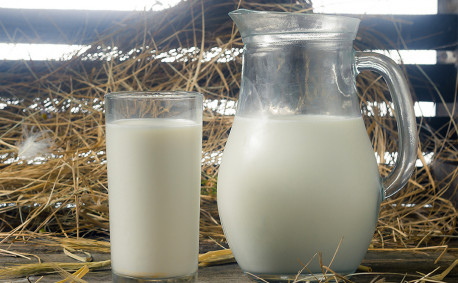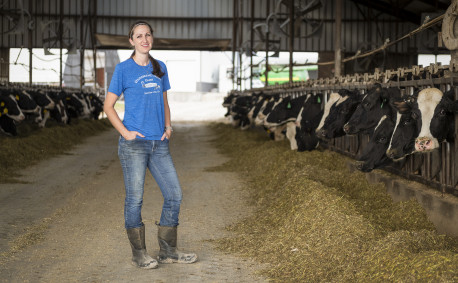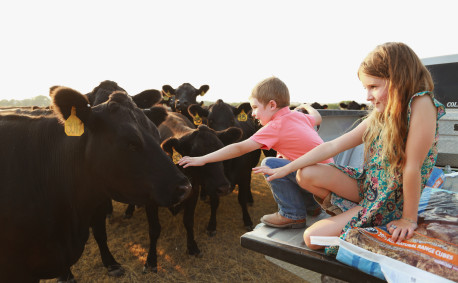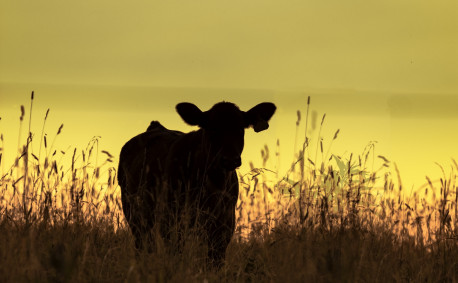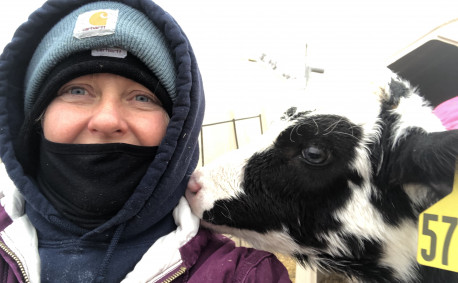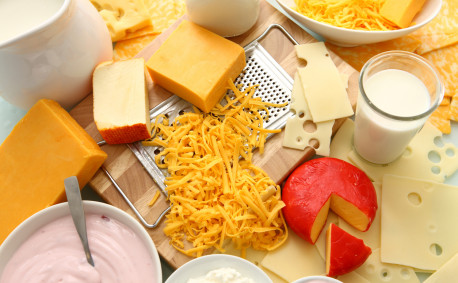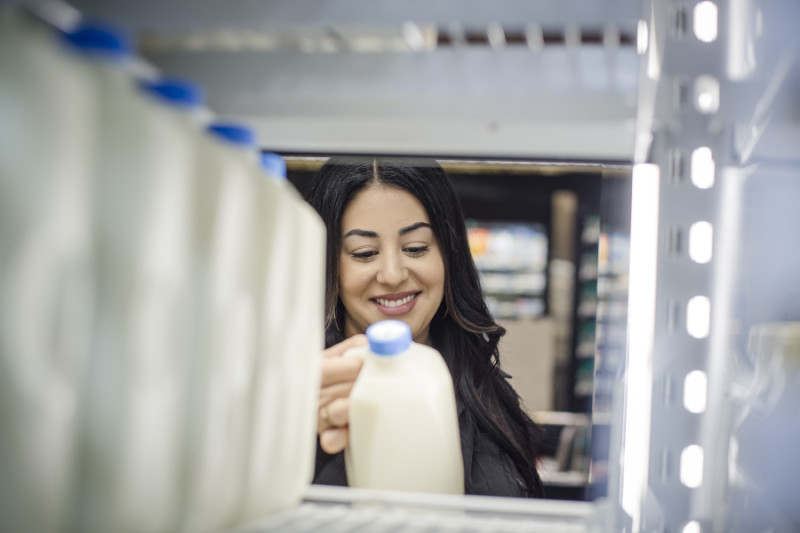Your Top Dairy Questions Answered
Do you want to know where your dairy comes from, but don’t know any dairy farmers you can ask? Never fear! Our friends at Midwest Dairy shared four of the top questions they hear from folks around the area — and we’ve got the udderly fascinating answers. Plus, we’ll introduce you to some Kansas dairy farmers whose passion and dedication helps put milk, cheese and so much more on our tables every day.
1. Do Dairy Farmers Drink Their Cows’ Milk?
Dairy farmers are very proud of the milk their cows produce, but they also want to make sure it’s safe to drink. Raw milk straight from the cow can contain harmful bacteria, so milk is pasteurized for safety. Pasteurization involves heating raw milk to 161 degrees F for at least 15 seconds to destroy bacteria and then cooling it back to 39 degrees.
Some farms, like Hildebrand Farms in Junction City, have their own processing facilities, which enables them to pasteurize their milk on site.
“[Building a facility to pasteurize and bottle our milk] was a leap of faith and it’s been a big game changer for our farm in a good way. The on-site processing facility has given us freedom to operate at a different level. … I’m a traditional whole milk drinker through and through. I love milk.” Melissa Hildebrand Reed
The FDA requires milk intended for consumption and sold across state lines to be pasteurized. In Kansas, farmers may sell raw milk directly to consumers on their farms.
2. Do Dairy Cows Eat Grass-Only Diets?
Grass-fed versus grain-fed is a matter of preference for beef cattle, but what about dairy cows? Are they grass-fed? Cows are grazing animals and grasses make up about half of their diet. But for cows to get all the nutrients they need, grains and other ingredients like nut hulls and cottonseed are also incorporated.
Silage is also a mainstay on the menu for dairy cows. Silage is fermented plant matter, and farms like Ohlde Dairy in north central Kansas take their silage seriously.
“Our ration is corn heavy. We grow all our corn with the intention of harvesting it as silage. Timing is critical to having the highest quality feed for the cows, which in turn maximizes milk production.” Justin Ohlde
Dairy cows are great recyclers and can eat foods humans can’t. So, not only do they reduce waste, but they also get the nutrients they need from the variety.
3. How Long Do Calves Stay with Their Moms?
Dairy calves are usually separated from their mothers shortly after birth so farmers can ensure calves get the proper care and nutrition in those first few days. This care helps prevent the spread of diseases or infection, like mastitis, and allows dairy farmers to monitor development during the first hours of a calf’s life. Dairy farmers also bond with the calves, which helps as they provide care. Building a relationship early on is very important at Kelly Hills Dairy in Seneca.
“Our cows come first; cow comfort is really important to us. … We’re animal lovers. We wouldn’t be working with animals every day if we weren’t.” Kristina Haverkamp
Newborn calves’ first meal is usually colostrum, a thick, milky substance produced by the mother, which is full of nutrients. After about three days, milk produced by the mother is typically no longer used to feed the calves — it instead goes toward making delicious dairy products for us to enjoy. From that point on, calves are fed a milk replacement until they’re weaned to eat solid foods. Weaning usually happens around seven to eight weeks after birth.
4. How Much Milk Does One Cow Produce in a Day?
Dairy cows are milked two to three times a day and make six to eight gallons of milk. That’s around 50 gallons per week and more than 2,000 gallons in a year!
Le-Dr Dairy in Newton takes great pride in sharing their dairy products with their community.
“Farmers truly care down to their toes about community, tending God’s creation and being good stewards of the Earth. Our whole being cares about putting a good product out there for people to enjoy and consume.” MeLissa Dryzmalla
Thirsty for more? Tour a dairy farm! If you don't know one near you, check out this video and visit the Bohnert family's dairy virtually.


